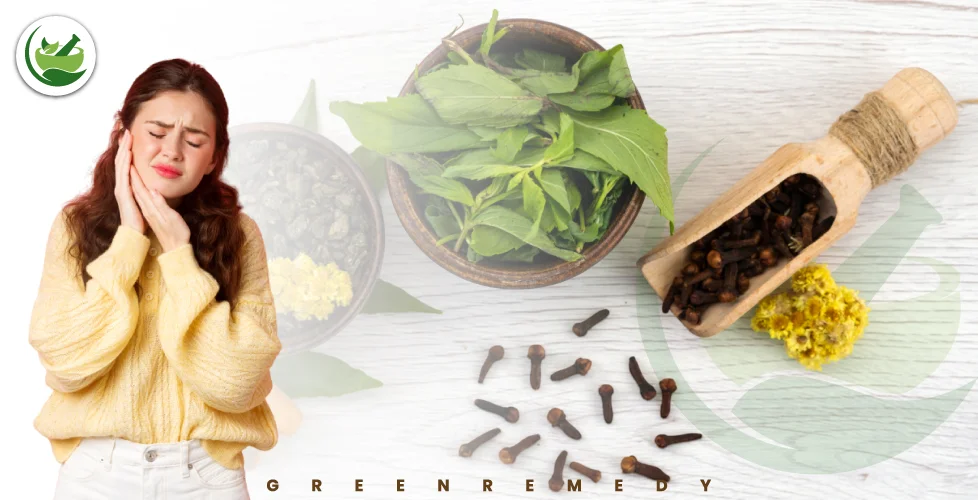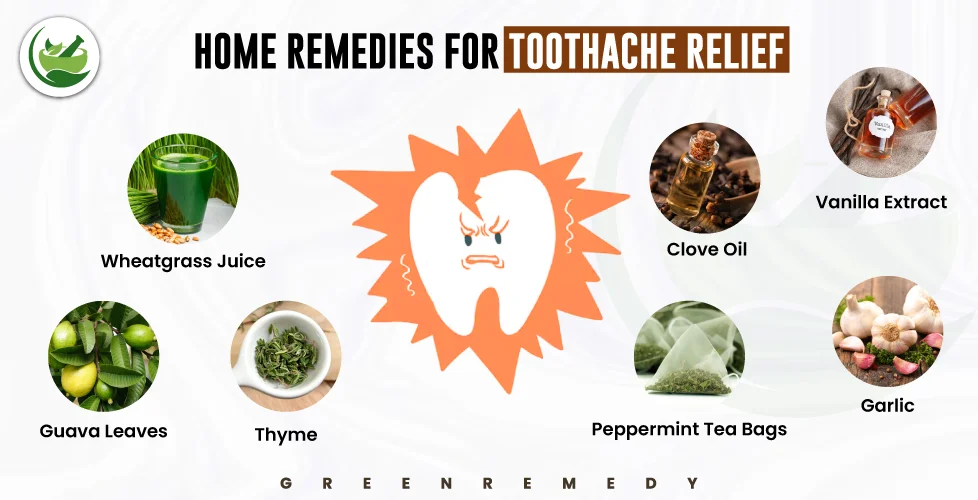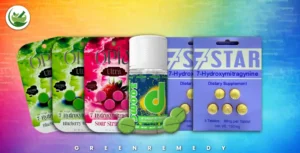
A toothache may seem like a small problem—until it strikes. Whether it’s a dull throb or a sharp stabbing pain, a toothache can quickly disrupt your day, your sleep, and your appetite. While professional dental care is essential for long-term solutions, home remedies for toothache can provide effective, natural relief in the meantime.
In this guide, we’ll explore the most trusted natural methods for easing dental pain at home. Many of these remedies, in fact, use simple ingredients that you likely already have in your kitchen. Furthermore, they offer quick and gentle relief without harsh chemicals. So, let’s dive into how you can soothe the ache and support your oral health using nature’s own toolkit.
Read more: How can we cure a cold with home remedies?
What Causes Toothaches?
To begin with, understanding the root cause of your toothache is essential before exploring any remedies. In many cases, the discomfort stems from one or more of the following issues:
- Tooth decay
- Gum infection or gingivitis
- Tooth abscess
- Tooth fracture or trauma
- Lodged food particles
- Sinus infections (which may cause referred pain)
- Teeth grinding (also known as bruxism)
By identifying the cause, you can not only choose the most effective home remedy but also determine whether or not it’s time to seek professional dental care.Understanding the cause helps you choose the right remedy and know when to seek dental help.
Read more: Natural Sleep Aids: Herbal Remedies
Top 10 Home Remedies for Toothache Relief Using Natural Ingredients

1. Saltwater Rinse – A Time-Tested Classic
Saltwater acts as a natural antibacterial agent and helps reduce inflammation. It loosens debris between teeth, soothes inflamed tissue, and helps heal oral wounds.
How to Use:
- Mix ½ teaspoon of salt into a cup of warm water.
- Swish the solution around your mouth for 30 seconds.
- Spit it out—do not swallow.
- Repeat 2–3 times a day.
2. Clove Oil – Natural Numbing Agent
Clove oil contains eugenol, a powerful compound with antiseptic and anesthetic properties. It’s widely known for its ability to numb pain and reduce inflammation.
How to Use:
- Soak a cotton ball in clove oil.
- Apply directly to the affected tooth and surrounding gums.
- Leave for a few minutes before removing.
- Repeat 2–3 times daily.
3. Garlic – Nature’s Antibiotic
Garlic doesn’t just add flavor to food—it’s packed with allicin, a natural antibacterial that can fight infection and reduce pain.
How to Use:
- Crush a fresh garlic clove to release its juice.
- Apply the paste directly to the affected area.
- Let it sit for 5–10 minutes, then rinse with warm water.
4. Cold Compress – Numb the Pain
If your toothache is due to injury or swelling, a cold compress is a reliable way to numb the area and reduce inflammation.
How to Use:
- Wrap a few ice cubes in a towel or use a cold gel pack.
- Apply to the outside of your cheek for 15–20 minutes.
- Use every few hours as needed.
5. Peppermint Tea Bags – Soothing and Cooling
Peppermint has numbing properties and a calming scent. Used tea bags can help reduce pain and soothe irritated gums.
How to Use:
- Steep a peppermint tea bag in hot water for 1–2 minutes.
- Let it cool down slightly.
- Apply the warm or cool tea bag to the affected area.
- Hold it there for 15–20 minutes.
6. Hydrogen Peroxide Rinse – Disinfect and Heal
Hydrogen peroxide is a powerful antibacterial agent. It can kill bacteria, reduce plaque, and heal bleeding gums.
How to Use:
- Mix equal parts 3% hydrogen peroxide and water.
- Swish around your mouth for 30 seconds.
- Spit out—do not swallow.
- Use once daily for a few days only.
7. Vanilla Extract – Aromatic Pain Relief
Vanilla extract contains alcohol, which can numb pain. It also has antioxidant and healing properties that make it effective for minor toothaches.
How to Use:
- Dab a small amount of pure vanilla extract onto a cotton swab or fingertip.
- Apply to the sore area for a few minutes.
- Repeat up to 3 times daily.
8. Guava Leaves – An Herbal Healer
Guava leaves are known for their anti-inflammatory, antimicrobial, and pain-relieving properties.
How to Use:
- Chew on fresh, clean guava leaves.
- Or boil them in water, allow to cool, and use as a mouthwash.
9. Wheatgrass Juice – Natural Detoxifier
Wheatgrass contains antibacterial compounds that can help reduce inflammation and fight infection in the mouth.
How to Use:
- Use fresh wheatgrass juice as a mouth rinse.
- Swish for 30 seconds to a minute.
- Spit out and repeat 1–2 times a day.
10. Thyme – Tiny Herb, Big Relief
Thyme is a powerful antibacterial and antioxidant herb, often used to relieve respiratory or oral infections.
How to Use:
- Mix a few drops of thyme essential oil with a carrier oil.
- Apply it directly to the sore tooth.
- Alternatively, make thyme tea and use it as a mouth rinse.
When to Avoid Home Remedies
While home remedies for toothache can provide temporary relief, there are times when self-care is not enough. Contact a dentist immediately if:
- The pain lasts more than 2 days.
- You have a fever or swelling.
- There’s pus around the tooth or gums.
- You experience difficulty breathing or swallowing.
- The tooth is cracked or severely decayed.
Read more: Exploring the Synergy of CBD and Other Natural Remedies
How to Prevent a Toothache
To begin with, maintaining proper oral hygiene is one of the most effective ways to reduce your risk of developing painful toothaches. First and foremost, make it a habit to brush your teeth twice a day for at least two minutes. In addition, daily flossing helps remove plaque and trapped food particles that your toothbrush might miss. Furthermore, using an antibacterial mouthwash can offer extra protection by eliminating harmful bacteria. While Home Remedies for Toothache provide excellent natural relief, prevention remains the best approach. Equally important, don’t skip regular dental checkups and professional cleanings every six months. By staying proactive, you can catch potential dental issues early and keep your teeth and gums healthy in the long run.
Certain foods are more likely to contribute to plaque buildup, such as:
- Citrus fruits
- White bread
- Sour candies
- Potato chips
- Dried fruits
- Sugary sodas
- Alcoholic beverages
- Chewing or crunching ice
The best cure is prevention. Adopt these habits to reduce the chances of toothaches:
- Brush twice daily with fluoride toothpaste.
- Floss daily to remove trapped food and plaque.
- Limit sugary snacks and acidic drinks.
- Visit your dentist regularly for cleanings and check-ups.
- Use a mouthguard if you grind your teeth at night.
Oral hygiene is the foundation of a pain-free mouth.To help prevent plaque buildup, make sure to brush and floss after consuming these foods or try to limit their intake as part of your dental care routine.
Read more: Herbal Remedies for Stress and Anxiety
How Garlic Treats the Pain from Toothaches:
Garlic can help relieve toothache pain thanks to its natural compound, allicin, which possesses powerful antibacterial and anti-inflammatory properties.
When garlic is crushed, it releases allicin, which in turn combats the bacteria responsible for infections in the mouth.
As a result, applying a garlic paste directly to the affected tooth may help numb the area and reduce swelling.
Furthermore, it supports healing by targeting and eliminating harmful microbes.
Therefore, garlic serves as an effective and natural remedy for managing mild dental pain at home.
Can Garlic Powder Treat a Toothache?
- Garlic powder may offer mild relief, but it’s not as effective as fresh garlic.
- Fresh garlic contains allicin, the key compound responsible for antibacterial and pain-relieving effects.
- Garlic powder has significantly less allicin due to processing.
- For best results, use freshly crushed garlic.
- If pain persists, consult a dentist for proper treatment.
Are there any risks or side effects?
Yes, while home remedies are generally safe, some can cause mild side effects.
- Clove oil may irritate sensitive gums if overused.
- Garlic can cause burning or allergic reactions in some people.
- Hydrogen peroxide should always be diluted to avoid mouth irritation.
- Always use remedies in moderation and consult a dentist if symptoms worsen.
How to use garlic for toothaches
Make sure to use fresh garlic for the best results.
1. Chew a Garlic Clove
Peel a fresh garlic clove and gently chew it using the affected tooth. This releases allicin, a natural compound known to kill bacteria that may be causing the pain. After chewing, let the garlic rest on the painful area for a few minutes to enhance its effect.
2. Make a Garlic Paste
First, crush a garlic clove using a mortar or the back of a spoon. Then, mix it with a pinch of salt, which has antibacterial and anti-inflammatory properties. Next, apply the paste directly to the affected tooth using your clean fingers or a cotton swab. Overall, this simple natural remedy may help reduce pain and fight infection until you can see a dentist.
Safety Tips for Using Garlic to Relieve Tooth Pain
- Use fresh garlic for the most effective antibacterial action.
- Apply in moderation—too much can irritate gums or soft tissue.
- Dilute if needed, especially if you have sensitive gums.
- Avoid direct contact with open sores or broken skin.
- Discontinue use if you experience burning, swelling, or allergic reactions.
- Consult your dentist if pain persists or worsens.
Read more: Super Healing Cold Sore Lip Balm: A Homemade Remedies Recipe
Alternative Home Treatments for Tooth Pain
If you’re looking for natural ways to ease tooth discomfort, here are several effective home treatments to try:
- Clove Oil – A natural pain reliever with antiseptic properties.
- Saltwater Rinse – Helps cleanse the mouth and reduce inflammation.
- Hydrogen Peroxide Rinse – Fights bacteria and soothes sore gums.
- Cold Compress – Reduces swelling and numbs the pain.
- Peppermint Tea Bags – Offers mild numbing and a calming effect.
- Vanilla Extract – Contains alcohol that can temporarily relieve pain.
- Wheatgrass Juice – Acts as a natural mouthwash to combat infection.
- Thyme Essential Oil – Known for its antibacterial and antioxidant effects.
These remedies can provide temporary relief, but be sure to consult a dentist for ongoing or severe tooth pain.
Read more: Aches and Pains Balm Remedies Recipe
Signs It’s Time to Visit the Dentist
While home remedies can provide temporary relief, certain symptoms should never be ignored. Persistent or severe tooth pain may signal an underlying issue that requires professional care. Ignoring these warning signs can lead to complications such as infections or tooth loss. Regular dental visits help catch problems early and keep your oral health in check. If you experience any of the following, it’s best to see your dentist promptly:
- Toothache lasting more than 1–2 days
- Swelling in your gums or face
- Fever or signs of infection (like pus or foul taste)
- Sensitivity or pain when chewing
- Cracked, broken, or visibly damaged teeth
Crushing, chewing, slicing, or chopping garlic activates allicin, a powerful natural compound known for its antibacterial and antimicrobial effects. This can offer short-term relief from toothache discomfort. Still, it’s important to remember that garlic is not a replacement for proper dental treatment.
Read more: Homemade remedies for stomach ache
Help & Support FAQs:
1. What are the best home remedies for toothache?
Some of the most effective home remedies include saltwater rinses, clove oil, garlic paste, cold compresses, peppermint tea bags, and hydrogen peroxide rinses. These natural options can help reduce pain and inflammation temporarily.
2. How do you get rid of a toothache at night?
Rinse with saltwater, apply a cold compress, use numbing gel, elevate your head, and take a pain reliever if needed.
3 .How do you get rid of a toothache in 5 minutes?
Rinse with salt water, hydrogen peroxide, or wheatgrass. Apply clove oil, vanilla extract, or garlic paste to the sore area, then use a cold compress for quick relief.
4. How can I get rid of a toothache without medication?
Try brushing, flossing, and rinsing with salt water or hydrogen peroxide. Use a cold compress, oil pulling, or chew garlic. See a dentist if pain persists.
5. Are home remedies enough to treat a toothache?
Home remedies can provide temporary relief, but they do not treat the underlying cause. If the pain persists for more than a day or two, or if swelling and fever occur, you should see a dentist as soon as possible.
Final Thoughts
Final Thoughts
Toothaches can be disruptive, painful, and frustrating however, they don’t have to take over your day. Fortunately, these home remedies for toothache provide fast, natural relief using simple ingredients that are easy to find in most homes. That said, while these remedies can ease discomfort in the short term, they should not be seen as a substitute for professional dental care. Instead, think of them as a helpful bridge to manage pain until you can consult your dentist. In the end, your smile deserves consistent care so nurture it with healthy habits, routine check-ups, and, when needed, the gentle support of nature’s own medicine cabinet.






